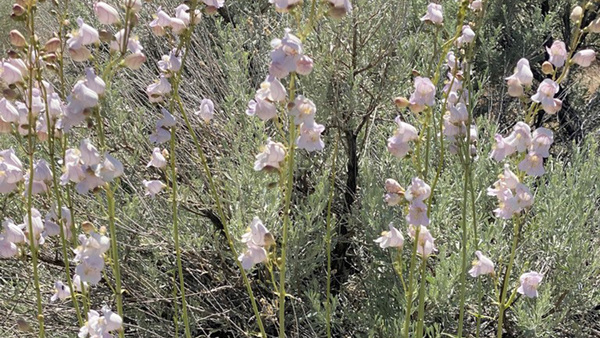
As we head into the dead heat of summer, parts of the garden can begin looking a little tired. Fortunately, there are several perennials that thrive in the heat and intense sun we experience in the Mountain West in mid to late summer, adding pops of vibrant color to the landscape. In addition to loving the heat and sun, the following perennials also happen to be deer and rabbit resistant, have extended bloom periods, and require minimal care. What’s not to love?

‘Blue Boa’ agastache
Agastache ‘Blue Boa’, Zones 5–10
I have a fondness for agastaches in general; they are easy to care for, come in a wide variety of flower colors, foliage textures, and colors, and they have a lovely light licorice smell. I love ‘Blue Boa’ for its spikes of dark purplish-blue flowers that seem to bloom forever. The butterflies and hummingbirds that visit my garden are particularly fond of it as well. It starts blooming in mid to late June and keeps right on going through the rest of the summer. It reaches 2 to 2½ feet tall and 1½ to 2 feet wide in full sun. I lightly deadhead spent flowers on occasion to encourage reblooming and keep it looking tidy.

Prairie zinnia
Zinnia grandiflora, Zones 4–9
The bright yellow flowers that blanket this ground cover scream “summer.” The thin, needle-like leaves cover woody stems, making it seem like a small shrub, similar to common thyme (Thymus vulgaris, Zones 5–9). It reaches 4 to 6 inches tall and 15 inches wide. This little gem prefers hot, sunny spots and works in xeric designs. Flowers bloom from late summer into fall. It also attracts bees and butterflies.

Kismet® Raspberry coneflower
Echinacea ‘TNECHKR’, Zones 4–9
Of course, I can’t resist adding coneflowers to this list. There are so many varieties to choose from, and I’ve grown and written about many of them over the years. This particular variety has more of a wine or berry color, hence the name. The Kismet® series is known for coneflowers with long bloom periods. Plants reach 1½ feet tall and 1½ to 2 feet wide in full sun. As with other coneflowers, the blossoms attract butterflies. If seed heads are left through the winter, you will find finches and other small birds feasting on them.

Blue globe thistle
Echinops bannaticus, Zones 3–8
While the word “thistle” may make you shudder, rest assured that globe thistles are not invasive weeds. The foliage is similar, with dark green, deeply lobed leaves that are fuzzy and prickly. But blue globe thistle has ornamental flowers that rise above the foliage, seeming to glow, especially at dusk. In bloom, it will reach 3 to 4 feet tall and 1½ to 2 feet wide. Once the flowers fade, the seed heads continue to provide interest into the fall. During bloom, this plant is covered with bees and butterflies of all kinds. It’s drought tolerant and requires minimal care. It also makes for a nice cut flower, fresh or dried.
—Michelle Provaznik is executive director of the Gardens on Spring Creek in Fort Collins, Colorado.


















Comments
Log in or create an account to post a comment.
Sign up Log in